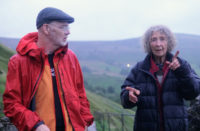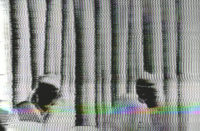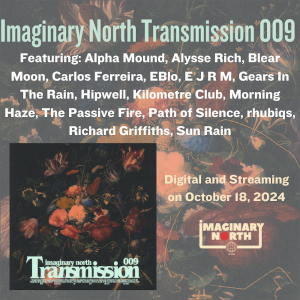Just a few hours before leaving the UK to tour Japan with Mouse on Mars, Adam Butler, a.k.a. Vert, took a few minutes to talk to Igloo correspondent Henrik Stromberg.
Igloo: How are you going to play live?
AB: What I normally do when I’m playing live is have a laptop, various little synths, a mixing desk and a keyboard, and I either play the laptop or, more usually, the keyboard. That’s what my live set consists of. Mainly tracks from Nine Types of Ambiguity, from Moremooseicforme and also from the Koln Konzert sometimes. If I feel the urge.
Igloo: This is going to be a very long tour, isn’t it?
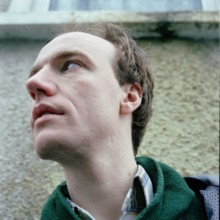
AB: Yes, it’s huge. It’s a bit frightening. We’re doing a week in Japan, and a couple of weeks in Europe. Then I get a week’s break, and after that we do a month in America. Haven’t done anything like it before.
Igloo: Have you played live much?
AB: Yes, quite a lot over the last couple of years.
Igloo: But the Koln Konzert was one of your first live gigs?
AB: Iive been doing music for years, so Iive played lots and lots of gigs and other things that I was doing. But the Koln Konzert was the first one I did as Vert. And it was obviously quite a special one. My gigs aren’t normally like that.
Igloo: How did you get the idea for that?
AB: Frank Dommert, who runs Sonig, asked me to come out to Koln to do a gig for the launch of the Mewantemooseic 12î, which was the first 12î I did on Sonig. And I thought OK, I’ve never done a gig as Vert, I’ve never been to Koln before, so I really wanted to do something special. But then I also thought that I didn’t want to carry all my equipment down there, because at the time I was using a desktop computer. So I thought how can I do something that’s going to be special, but portable And playing the piano seemed like an obvious thing to do, so what I actually did was make a backing CD and played the piano along with it. So all I had to take with me was a CD-player.
I thought of Keith Jarretís Koln Konzert because I was living with a friend who listened to it quite a lot, and when I thought about actually doing it, it just made me laugh, because it seemed like such a stupid idea. I thought that a lot of people would be quite surprised by it, and I was interested to see if I could extract anything from this fairly cheesy piece of piano music and make something interesting.
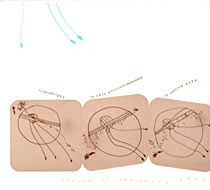
Igloo: So you are actually not too fond of it?
AB: Well, I grew quite fond of some of it while I was preparing for the gig. But it is not in my top ten albums of all time or anything like that. I think there are some good bits in it, and Iíd love to be able to improvise like that. But it is quite cheesy.
Igloo: How much improvisation could you do with the backing CD?
AB: Actually, almost none. The sleeve notes kind of implied that a lot of it was improvised, but the sleeve notes are just the sleeve notes of a Miles Davis album. Everywhere it said Miles Davis I just crossed it out and put Vert instead. It’s not necessarily relevant for the album, I just liked the idea of taking someone else’s sleeve notes. It’s almost relevant.
Igloo: So is that an infatuation of yours, Miles Davis?
AB: Yeah, definitely. He’s been a big influence on me for a long time. Mainly, obviously, the early seventies very electric period, which I think is absolutely incredible. I donít think anything’s touched it. The fact that it’s really physical and funky, and at the same time really evocative, kind of opens up visions and hints of things which you can never quite fully grasp. And that for me is very important in music, the idea of hinting at things that can’t be described any other way than through music. Those albums from the early seventies, from On the Corner onwards until he stopped, contain really absolutely incredible music.
Igloo: Thereís not much in your music that says jazz to me, but then I donít know anything about jazz.
AB: There is a jazz influence in what I do, but it’s obviously not jazz music. You can imitate jazz that has gone before and say “There, I make jazz.” But jazz is more than that, kind of a spirit of music.
Igloo: My problem is, I keep hearing all this trip-hop stuff that’s “jazzy”, and you get so tired of it.
AB: Yeah, that’s just bullshit, that’s what I mean, sample a saxophone and, look, it’s jazz, that’s bullshit. Jazz is not about the instrument or anything like that, I think it’s just an approach to music. I guess what influences me is that it is a combination of the intellectual and the physical.
Igloo: You seem to have a very intellectual approach to music, e.g. the îTense and Learningî track on your website.
AB: Yeah. It varies. I’m constantly pulling myself in many directions. I wouldn’t call myself an intellectual, but I do think about stuff a lot. I studied philosophy at University; I think that had quite an effect on the way that I think, as much as anything. And that finds its way into the music. I try and put everything in music, there has to be some intellect in there.
Igloo: The titles of the tracks on your new album on the other hand could be taken as saying that this was just something you did when you were bored, e.g. “The tide comes in and then the tide goes out” could say “I’m bored, so I think I’ll make a track”.
AB: [laughs] No, the reason I called it that, apart from the fact that it sounds nice, it’s an idea about cycles. How things seem to happen, and then something else happens, and then something else happens. And something like the tide is a massive, massive thing. It comes, and then it goes. It’s a very strong idea that I have, that things just happen, and they happen in a very cyclical way. Often I find that ideas of progress are a human conceit; when we look at things around us, it’s not really any progress, it’s more this cyclical thing. And the track is very much structured like that as well. It starts off very gently and then crescendos to quite a lot of noise and then dies away again. A structure Iím quite fond of.
Igloo: The Last night from a bus I saw track has a similar structure.
AB: Yes, it has.
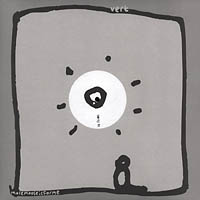
Igloo: Is that your poem?
AB: Yes. I went out one night in London and got on a night bus. And on night busses in London you tend to see some quite amazing things. Of the things I saw, not all of it was very good at all. And then the next morning I actually woke up with a fever, so I wrote that poem while I had this fever. It found its way into that track.
Igloo: Is that something you do much, write words down?
AB: Very rarely. That’s probably the only poem I’ve ever written. I used to try and write poetry when I was an adolescent, but…[laughter]. It’s not something I do that often. Writing, in general, is very important to me. It’s something that I’d like to do, and it’s a very big influence on me. Literature and poetry.
Igloo: What books have you read lately?
AB: The last book that completely blew me away was Gravityís Rainbow by Thomas Pynchon. He is an amazing writer. He’s still alive and quite old now, and he’s a complete recluse. He never gives interviews, no one really knows who he is, and he’s written about five books in his life. Gravity’s Rainbow is absolutely monolithic, it’s totally, totally epic. Quite often compared to Ulysses by Joyce or Moby Dick, it’s that kind of book. Very, very dense, quite hard going. But so beautifully written that you stay with it, many times I’ve been reading it for pages and pages and I just wouldnít know what he was talking about at all, wouldn’t know who any of the people involved were, because he’d introduced completely new sets of people, but you just have to trust him and go with it. And the thing that makes you trust him is the staggering beauty of his writing. It pays you back eventually. An incredible book.
Igloo: Have you read anything by Neal Stephenson (whoís often been compared to Pynchon)?
AB: Yes, I have. I think he’s a very good writer as well. I think I’ve read everything that Neal Stephensonís written, and Cryptonomicon, his latest, is his best by a long way.
Igloo: I think I like Snow Crash better.
AB: Really?
Igloo: I liked all the religio-linguistic mumbo jumbo in that book.
AB: Yeah, that was all really interesting. The thing that I always thought about Neal Stephenson is that heís never been able to write an ending. Like the end of Snow Crash, it just degenerates into some kind of action film, and that’s true of The Diamond Age, the one he did after that, as well. But with Cryptonomicon he actually managed to write a book that sustained itself all the way through.
Igloo: Where does the album title Nine Types of Ambiguity come from?
AB: There’s a famous book about poetry from the early 20th century called Seven Types of Ambiguity. Quite an interesting book. What the writer, William Anderson, is talking about is how ambiguity is the key to poetry. He goes on to discuss seven different types of ambiguity that are found throughout poetry. I actually think that plays a very important part in music. The idea I talked about earlier, that music should hint at things, should evoke things without ever making it definite. And ambiguity is one way of describing that process. I do actually try to present ambiguity in my music, because I think it forces the listener to become more active. Rather than being very definite with the music, to instead give ideas without ever being explicit about them. So the listener is then forced to either ignore it completely, or if they want to take part, to put something into those ideas themselves. I have lots of ideas, and a lot of my ideas don’t have conclusions. And I donít want to force my conclusions onto other people, but what I do want to do is present them with things that I see.
Igloo: How did you progress from doing breakbeats to this kind of stuff?
AB: When I was doing breakbeats, I always saw beats as being textural. Around the time when I was doing Broken Breakbeats Bebop the beats were not standard breakbeats, they were sort of a textural device. What I really wanted to do is not to have “OK, here’s the beat, here’s the tune, here’s the bass-line.” I just want to combine everything into one solid mesh. I think that whatís happened to my music, is that I have gone more and more down that line, where often the rhythm parts won’t necessarily be beats, and the melody parts will be quite rhythmic, sort of combine everything to make it more organic. A lot of the things I learned from spending hours touching up breakbeats I still apply now; I do still spend a lot of time cutting up breakbeats. Then I’ll usually process them beyond all recognition, so that the rhythm is maintained, but it’s not anything that you would ever describe as a breakbeat.

Igloo: You seem to use a lot of very harsh sounds, like creaks and squeals.
AB: Yeah, I do. I have quite a fondness for harsh sounds, I guess. I used to play the guitar in a live band when I was a lot younger. I was obsessed with feedback then, an obsession I’ve never really lost. I don’t want to make ugly music, but do like the quality of noisy sounds. It’s not usually my intention to be harsh and industrial and uncomfortable, but I think that again it’s a question of trying to use everything. I want to bring some of that in, as well as some fairly pretty sounds.
Igloo: Yes, I think your music is beautiful, but I can tell that if I were to play it to some of my friends, they’d go “Ugh, noise”.
AB: Yeah, I get that reaction a lot [laughter]. But it’s not like Merzbow, or anything like that.
Igloo: Could you explain the spelling mooseic?
AB: Actually I nicked that from John Cage. The first 12″ I did on Sonic, Mewantemooseic, was an event that John Cage organized called Mewantemooseic day, where the idea was to present his and other people’s music in an environment where anyone could come along and take part in the music as well. I really liked that idea, although I donít actually do that myself. Ha. But I like the idea.
One of the constant problems that I’ve had is that whenever I say to people I make music, they say “Oh, what kind of music do you make?” And I get stuck. It’s very hard to describe to people what it is. They say “What genre is it in?” Well, I don’t know what genre it’s in, it’s in lots of genres I guess. What I always used to say to people is “It’s just music”, and they were never very happy with that. So now I say “It’s just mooseic”.







